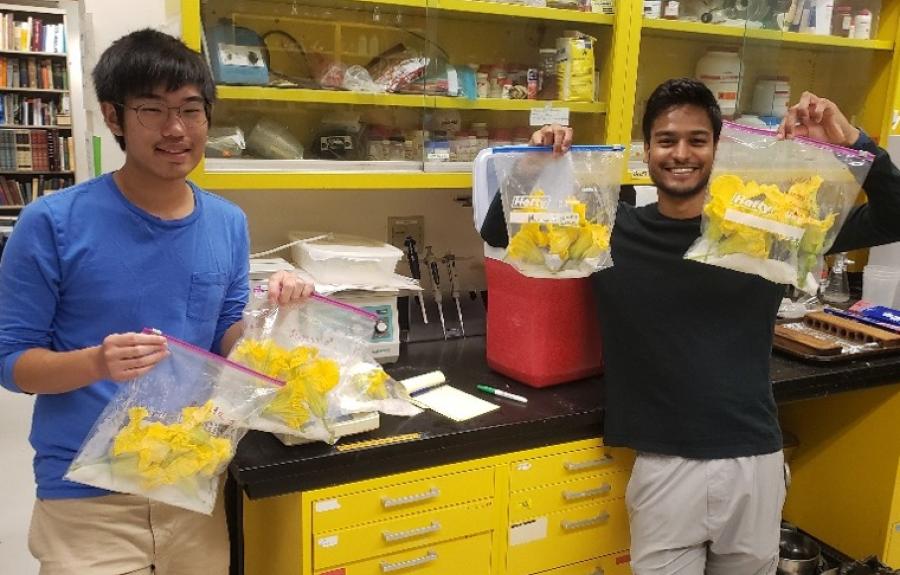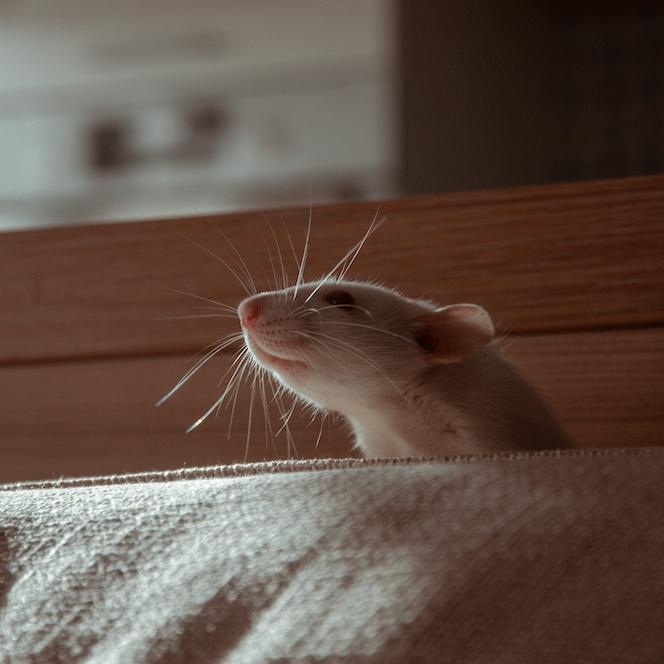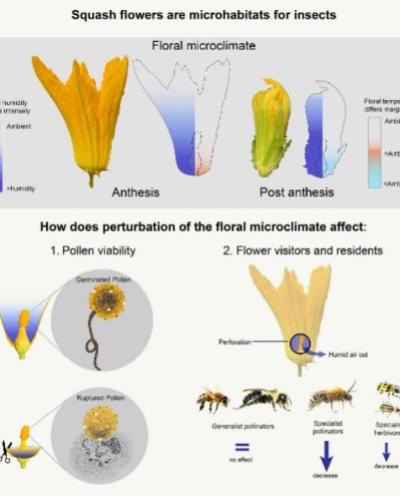(Dahake et al. 2025, Current Biology 35: 1-17, https://doi.org/10.1016/j.cub.2025.08.039 )
Some plant traits are so unusual that they compel physiological or even behavioral comparisons to animals. For example, the prodigious heat and fragrance production of giant water lilies are fueled by metabolic rates comparable to those of hummingbirds. Studies of such phenomena often reveal unexpected mechanisms. We explored one such case, in which the oversized flowers of squash (Cucurbita spp.) maintain extraordinary relative humidity (RH) gradients, up to 40% higher than the surrounding air. Although most flowers are slightly humid (0.5-3% above ambient) just by virtue of evaporative water loss, the 10-fold higher RH gradients in squash flowers require more nuanced explanation.
Our studies revealed that the enormous RH gradients of squash flowers:
are comparable between wild and domesticated species
are due to active stomatal conductance rather than passive nectar evaporation
are reduced when flowers are damaged (e.g. holes bitten by cucumber beetles)
The experimental ablation of RH gradients in squash flowers resulted in bursting pollen grains and ruptured pollen tubes, with a direct loss of (male) plant fitness. Furthermore, reduced RH decreased floral visitation and residence times by specialist insects (male squash bee pollinators and beetle herbivores) but not generalist insects (honeybees and bumblebees). These findings indicate that squash plants promote reproductive success by actively maintaining hothouse-level humidity gradients within their flowers despite potentially severe costs to water balance, evoking costly examples of courtship in animals.







